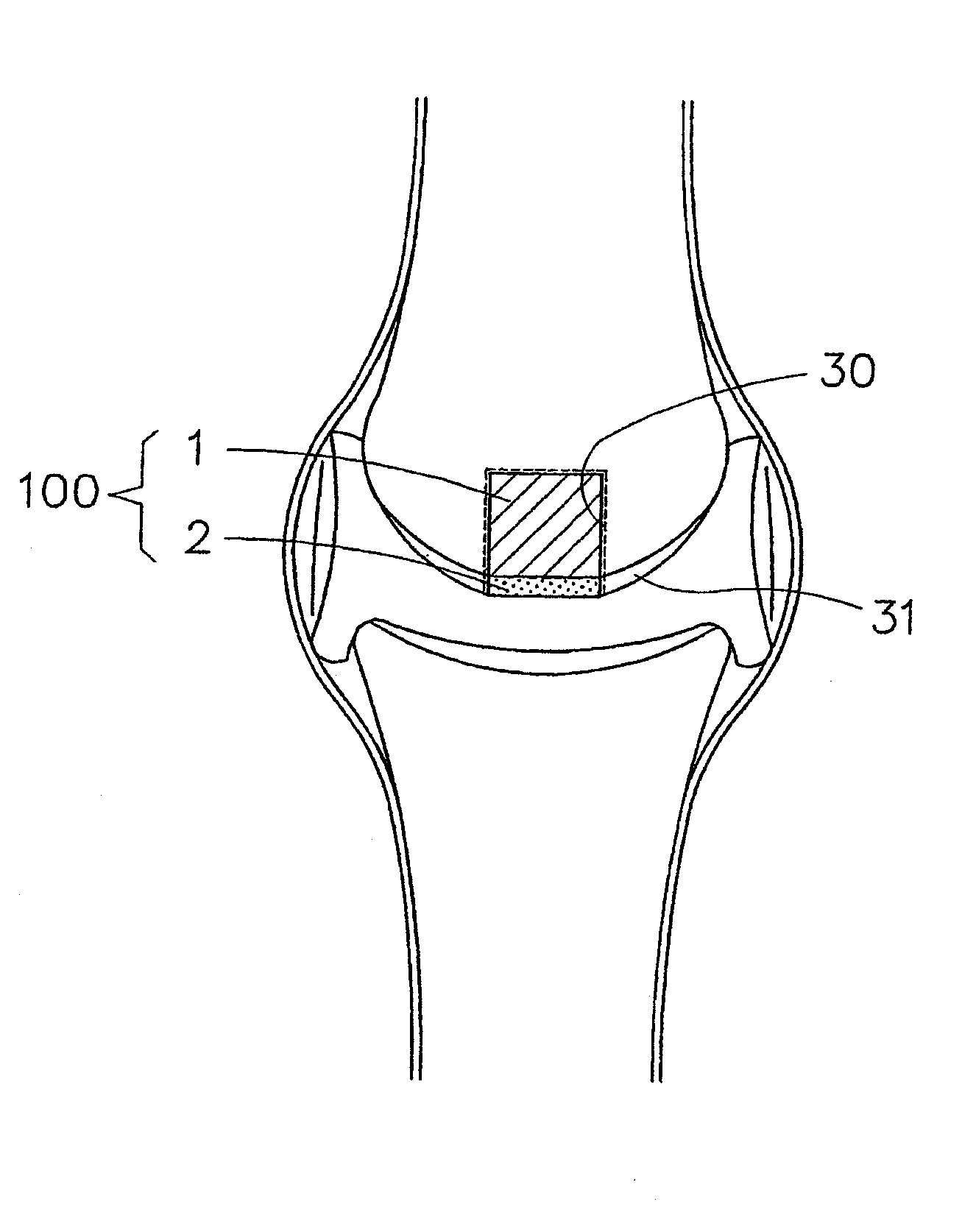Implant composite material
a composite material and composite material technology, applied in the field of composite materials, can solve the problems of not being able to obtain continuous and connecting shifting between cartilage tissues and hard-bone tissues, not being able to use a material as a scaffold for the treatment or reconstruction of a necrotized part of a joint bone head or for the reinforcement, and not being able to develop adherent to a joint, etc., to achieve rapid hydrolysis, high bioceramic-particle proportion, and hydrolysis far more rapid
- Summary
- Abstract
- Description
- Claims
- Application Information
AI Technical Summary
Benefits of technology
Problems solved by technology
Method used
Image
Examples
Embodiment Construction
[0114]Specific embodiments of the invention will be described below in detail by reference to drawings.
[0115]FIG. 1 is a slant view of an implant composite material of the first type as one embodiment of the invention; FIG. 2 is a view illustrating an example in which this implant composite material is used; and FIG. 3 is an enlarged sectional view illustrating part of the implant composite material.
[0116]The implant composite material 100 shown in FIG. 1 is an implant composite material of the first type which comprises a compact composite 1 and a porous composite 2 superposed on and united with one side (upper side in this embodiment) of a surface-layer part of the compact composite 1.
[0117]The compact composite 1 is a compact block composite comprising a biodegradable and bioabsorbable polymer containing bioabsorbable and bioactive bioceramic particles. Although the compact composite 1 in this embodiment is in the form of a solid cylinder, it can have a quadrangular solid prism, ...
PUM
| Property | Measurement | Unit |
|---|---|---|
| Pore size | aaaaa | aaaaa |
| Percent by mass | aaaaa | aaaaa |
| Percent by mass | aaaaa | aaaaa |
Abstract
Description
Claims
Application Information
 Login to View More
Login to View More - R&D
- Intellectual Property
- Life Sciences
- Materials
- Tech Scout
- Unparalleled Data Quality
- Higher Quality Content
- 60% Fewer Hallucinations
Browse by: Latest US Patents, China's latest patents, Technical Efficacy Thesaurus, Application Domain, Technology Topic, Popular Technical Reports.
© 2025 PatSnap. All rights reserved.Legal|Privacy policy|Modern Slavery Act Transparency Statement|Sitemap|About US| Contact US: help@patsnap.com



